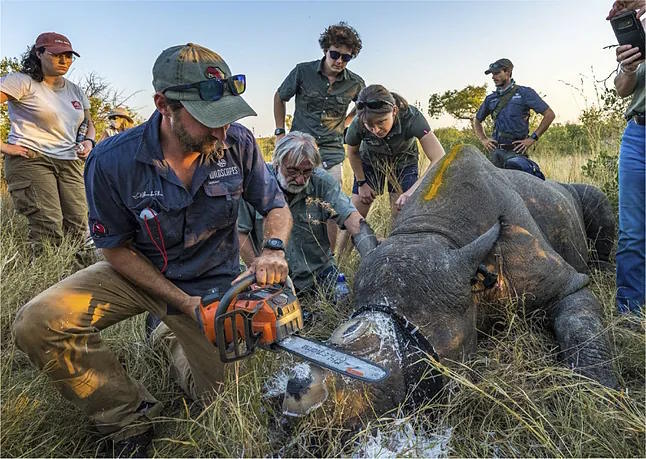It is a cruel but extraordinarily effective measure. African rhinos have ceased to be targets for poaching after undergoing dehorning operations. According to a study conducted in 11 reserves in the Greater Kruger region of South Africa, amputation is saving their lives.
The study, just published in the journal Science, has found that dehorning has reduced poaching by 78%. However, it also highlights that law enforcement interventions designed to punish poachers have no deterrent effect and are applied after the damage is done. "Our results challenge governments, the private sector, and non-governmental organizations to reevaluate their strategic approaches to wildlife crimes," says Dr. Tim Kuiper from Nelson Mandela University. "While detecting and stopping poachers is essential, strategies focusing on reducing opportunities and rewards may be more effective."
Poaching not only harms rhinos. It also affects tourism revenue, damages ecosystems, funds criminal syndicates, and fuels violence in the region. From 2017 to 2023, Kuiper's team recorded the poaching of 1,985 rhinos in the 11 analyzed reserves of Greater Kruger, an area spanning over 2.5 million hectares of unfenced wilderness and home to the world's largest population of wild rhinos. Among them is the southern white rhino, a species considered "near threatened" by the International Union for Conservation of Nature.
During the same period, $74 million was spent on rangers, tracking dogs, helicopters, access controls, and detection cameras, leading to the arrest of over 700 poachers, with no effect on rhinos or the poachers themselves due to corruption and an ineffective judicial system, as researchers denounce. However, dehorning accounts for only 1.2% of the total budget spent on rhino conservation during that period.
Dehorned white rhinoceros with its calf.Tim Kuiper
"This study provides an excellent perspective on where donor funding for conservation can be spent and where it should be avoided," says Dr. Markus Hofmeyr from the Rhino Recovery Fund.
Researchers also warn that poachers sometimes still seek stumps of dehorned rhinos to take what remains or newly regenerated horns out of necessity. They caution that the long-term impact of dehorning on rhino biology remains poorly understood.
"Persistent socio-economic inequalities incentivize many vulnerable and motivated individuals to join and engage in poaching for criminal organizations despite the risks," note the researchers of this study conducted under the sponsorship of the Greater Kruger Environmental Protection Foundation (GKEPF) and scientists from the University of Cape Town (UCT), Nelson Mandela University, Stellenbosch University, and the University of Oxford.
